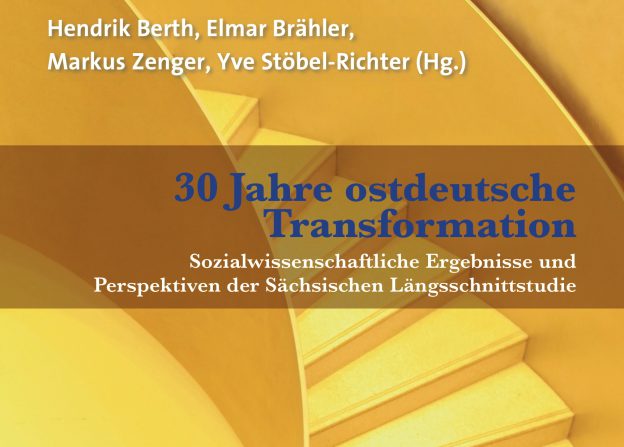The themes of the Saxon longitudinal study in the first three waves before the fall of the Berlin wall were:
- Identification with the political system of the GDR (“I feel closely connected with the GDR as my socialist fatherland”),
- Interest in politics (“How strongly are you interested in world politics?“),
- Statements about the military service (“Have you already thought about the way you will complete your military service? (at the NVA, at the border troops or at other armed forces)?“),
- Motivation to learn (“…because a socialist citizen has to be widely educated”) and to complete their homework,
- Participation in the Free German Youth (FDJ) (“How interested are you in a.) attending the FDJ general meetings and b.) in the youth classes? “, “What is your function in the FDJ?“),
- School grades or
- Goals and plans for the future life (“What are you going to do after graduating from POS?“).
After the fall of the Berlin Wall in 1989 and German reunification, the aim of the study changed. Since 1990 the focus has been to examine a group of young East Germans (now adults) experiencing the East German transformation. Sub-questions and detailed individual questions concentrated on, among other things:
- Basic political attitudes (attitudes toward unified Germany, the social system, the political parties, identification with previous ideals, attribution of one’s own attitudes toward political parties etc.),
- Collective identities (sense of belonging as a citizen of the Federal Republic, as a citizen of the former GDR, as a German, East German, Saxon, European),
- Far-right, xenophobic, and authoritarian attitudes,
- Comparative observations of the social systems of the “real socialist” GDR and the current system in the Federal Republic,
- Analysis of long-term effects of previous bonds to the socialist system,
- Life orientations (life goals) and values,
- Social and personal trust in the future,
- Subjective well-being (life satisfaction, experiencing threat, psychosomatic complaints, psychosocial stress),
- Frequency and duration of unemployment, including its material, psychological and health consequences, changes in living conditions and ways of life,
- Migration behavior (realized or planned migration to the old federal states or abroad, integration into the new social environment),
- Family education, desire to have children, ideal and realized number of children.
The results of the study can be found on the result pages or in the publications.

